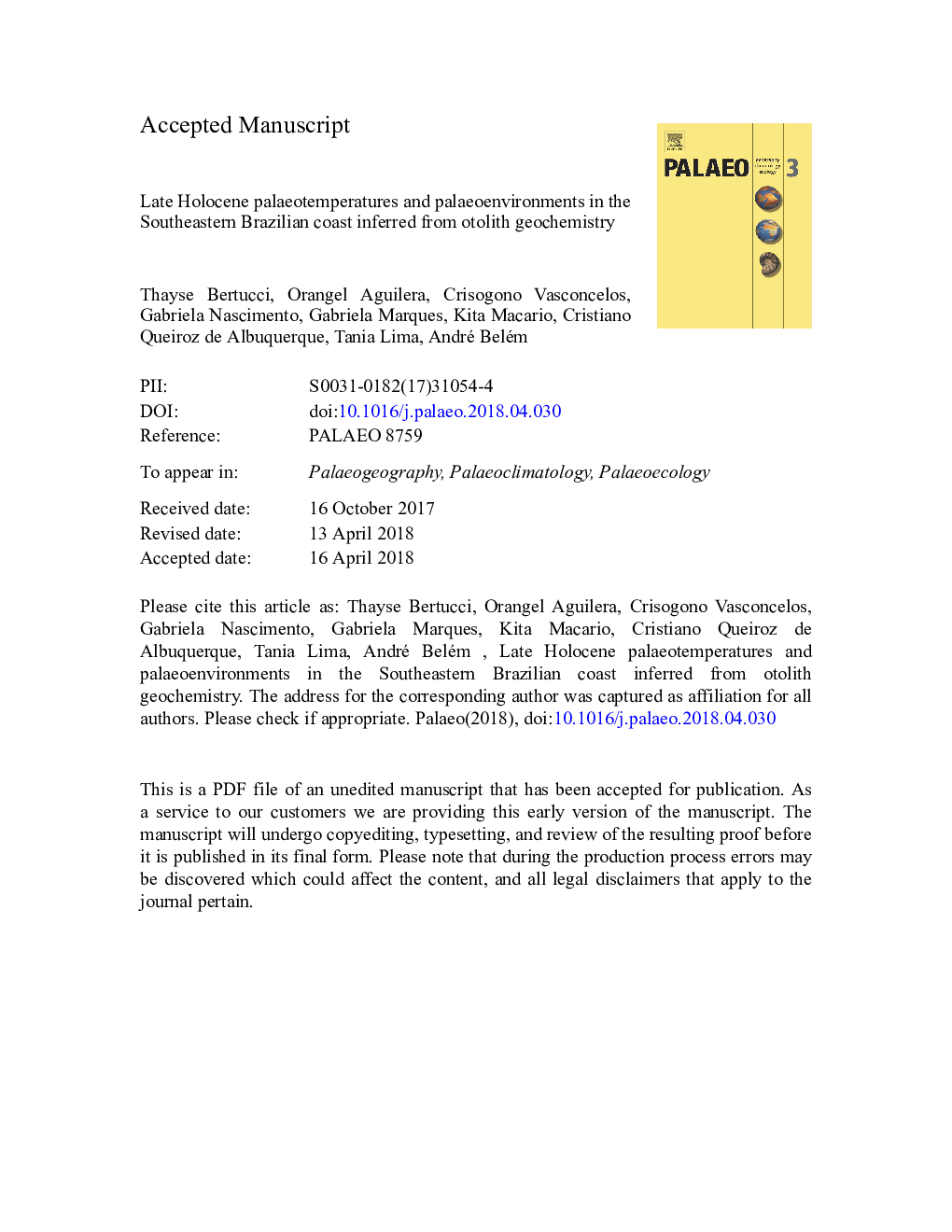| Article ID | Journal | Published Year | Pages | File Type |
|---|---|---|---|---|
| 8868175 | Palaeogeography, Palaeoclimatology, Palaeoecology | 2018 | 32 Pages |
Abstract
Holocene palaeoceanography and climatic reconstructions were evaluated based on proxy analyses of fish otoliths from shellmounds located along the coast of Rio de Janeiro State, Brazil. Modern coastal seasonal upwelling is associated with the ascension of a deep and cold-water mass as a consequence of persistent NE winds that affect the climate in southeastern Brazil. However, this seasonal influence and the effect of the Holocene palaeoenvironment on shallow water are poorly known. In this work, coastal palaeotemperatures were estimated based on the geochemical analyses of otolith. The results of the δ18O and δ13C analyses from Holocene otoliths, obtained from coastal shellmounds separated by a distance of almost 200â¯km, show two distinctive otolith-derived palaeotemperature signals in a coastal region under upwelling influence. Additionally, this analysis suggests that the fish lived in marine waters, showing similar microchemistry values composition when compared with modern marine otoliths.
Related Topics
Physical Sciences and Engineering
Earth and Planetary Sciences
Earth-Surface Processes
Authors
Thayse Bertucci, Orangel Aguilera, Crisogono Vasconcelos, Gabriela Nascimento, Gabriela Marques, Kita Macario, Cristiano Queiroz de Albuquerque, Tania Lima, André Belém,
